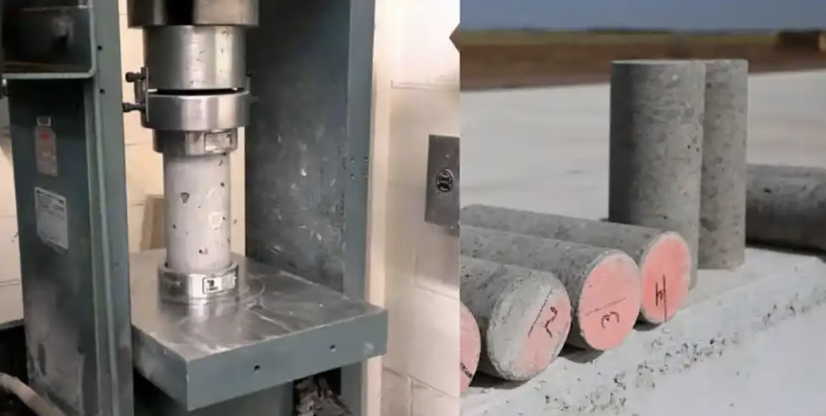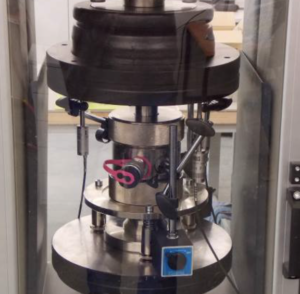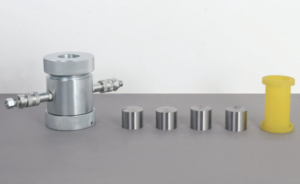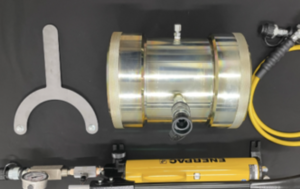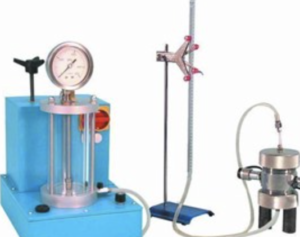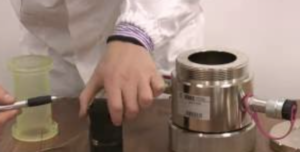Unconfined Compressive Strength of Soil: Understanding Strength Without Confinement
In geotechnical engineering, knowing how soil behaves under stress is essential for safe and efficient design. One key indicator of that behavior is the Unconfined Compressive Strength (UCS)—a quick and simple way to evaluate the strength of cohesive soils. Let’s explore what UCS is, how it’s measured, and what it tells us about soil performance in the field.
What Is Unconfined Compressive Strength?
Unconfined Compressive Strength (UCS)1 is the maximum axial stress that a cylindrical soil sample can withstand before failure—without any lateral support or confinement. It is primarily used for cohesive soils like clay2, which have enough internal strength to stand on their own during testing.
Unlike triaxial or confined compression tests, UCS measures soil strength in its most basic form3, offering fast insight into how it might behave under vertical loading—such as beneath a shallow foundation.
| Parameter | Explanation |
|---|---|
| Measured property | Axial compressive stress at failure |
| Units | kPa or psi |
| Test applicability | Cohesive soils (typically fine-grained clays) |
| Confining pressure | Zero (unconfined) |
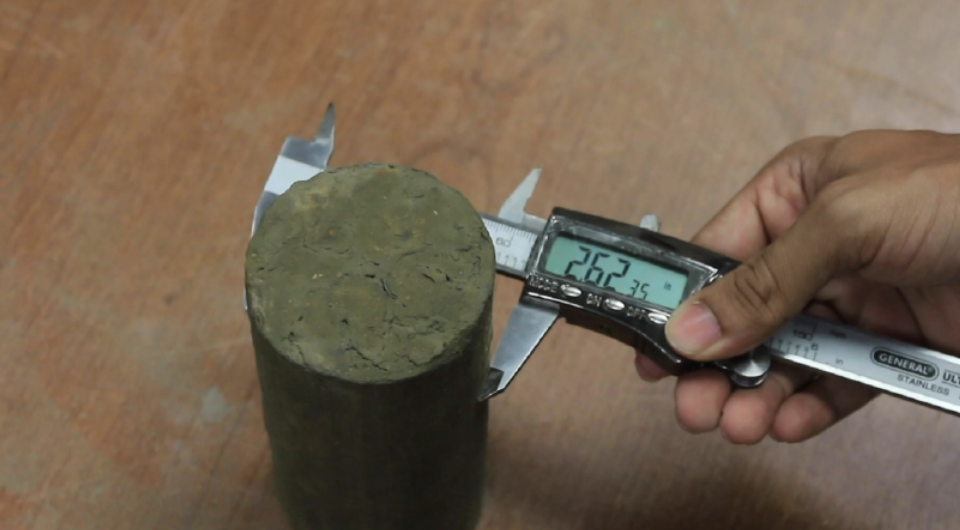
Test Procedure and Sample Requirements
The UCS test is straightforward, governed by ASTM D2166 / AASHTO T2084. It involves compressing a cylindrical soil specimen5 at a constant strain rate until it fails.
Key Testing Steps:
- Sample Preparation: Cylindrical sample of 76 mm height and 38 mm diameter (2:1 ratio)
- No Confinement: Sample is tested in open air, with no lateral support
- Axial Loading: Load applied via compression machine at 0.5–2% strain per minute
- Failure Point: Peak stress is recorded as UCS value
Sample Requirements:
- Undisturbed samples6 are preferred
- Moisture content and density should match field conditions
- Ends must be flat and parallel
| Test Input | Standard | Specification |
|---|---|---|
| Sample size | ASTM D2166 | 38 mm dia × 76 mm height |
| Strain rate | ASTM D2166 | 0.5–2% per minute |
| Moisture tolerance | ±2% of in-situ | For accurate strength correlation |
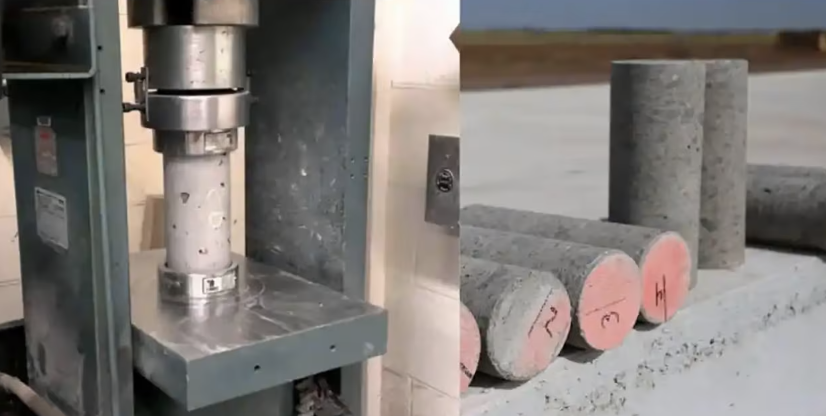
Interpretation of Results and Strength Parameters
The main outcome of the UCS test is the maximum axial stress7 a soil can bear before shear failure. Since no confining pressure is applied, the test assumes the lateral stress is zero, which simplifies strength analysis.
Key Strength Parameter:
- Unconfined Compressive Strength (qu)8 = Failure load / Cross-sectional area
- Undrained Shear Strength (Su)9 = qu / 2 (for saturated clays under undrained condition)
The test also yields:
- Stress–strain curves that show stiffness and ductility
- Failure modes: bulging (ductile) vs. splitting (brittle)
| Measured Output | Engineering Use |
|---|---|
| Unconfined compressive strength (qu) | Indicates load-bearing capacity |
| Undrained shear strength (Su) | Used in foundation and slope design |
| Deformation modulus (optional) | Supports settlement prediction |
Results can vary significantly based on moisture content, sample disturbance, and loading rate, so careful sample handling is critical.
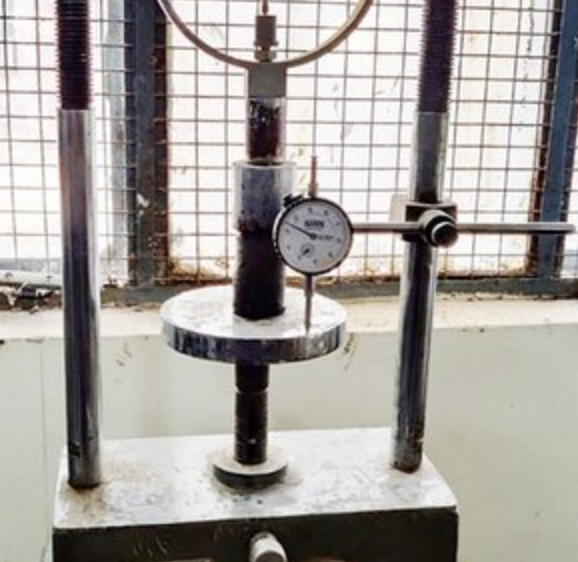
Applications and Limitations in Engineering Practice
The UCS test is widely used because it is cost-effective and fast—ideal for preliminary site investigations or quality control in soft clay zones.
Applications:
- Foundation bearing capacity estimation for low-rise buildings
- Stability assessment for temporary slopes or trenches
- Soil improvement verification (before and after stabilization)
- Geotechnical classification of cohesive soils
However, the test also has limitations:
| Strengths | Limitations |
|---|---|
| Simple and quick | Only suitable for cohesive, undisturbed soils |
| No need for expensive equipment | Not applicable to sandy or granular soils |
| Provides undrained shear strength estimate | Doesn’t simulate real confining field conditions |
| Great for comparing soil improvement methods | Sensitive to moisture, sample prep, and strain rate |
Engineers should interpret UCS results as part of a broader geotechnical analysis, not as a standalone decision tool.

Conclusion
The Unconfined Compressive Strength test offers a simple yet powerful window into the mechanical behavior of cohesive soils. With fast setup and low cost, it’s a go-to tool in the geotechnical toolbox—especially in the early phases of foundation and slope design. However, like any test, its value lies in understanding not just what it shows—but also what it doesn’t.
-
Understanding UCS is crucial for evaluating soil stability and foundation design. Explore this link for in-depth insights. ↩
-
Cohesive soils play a vital role in construction and engineering. Learn more about their characteristics and applications. ↩
-
This fundamental measurement is key for predicting soil behavior. Discover its importance in engineering practices. ↩
-
Understanding these standards is crucial for accurate soil testing and compliance in engineering projects. ↩
-
Learn about the preparation of cylindrical soil specimens to ensure reliable and valid test results. ↩
-
Discover the importance of undisturbed samples for accurate soil behavior representation in tests. ↩
-
Understanding maximum axial stress is crucial for evaluating soil stability and strength in construction projects. ↩
-
Exploring Unconfined Compressive Strength helps in assessing soil behavior under load, essential for safe engineering designs. ↩
-
Learning about Undrained Shear Strength is vital for understanding soil performance in saturated conditions, impacting foundation design. ↩

